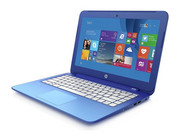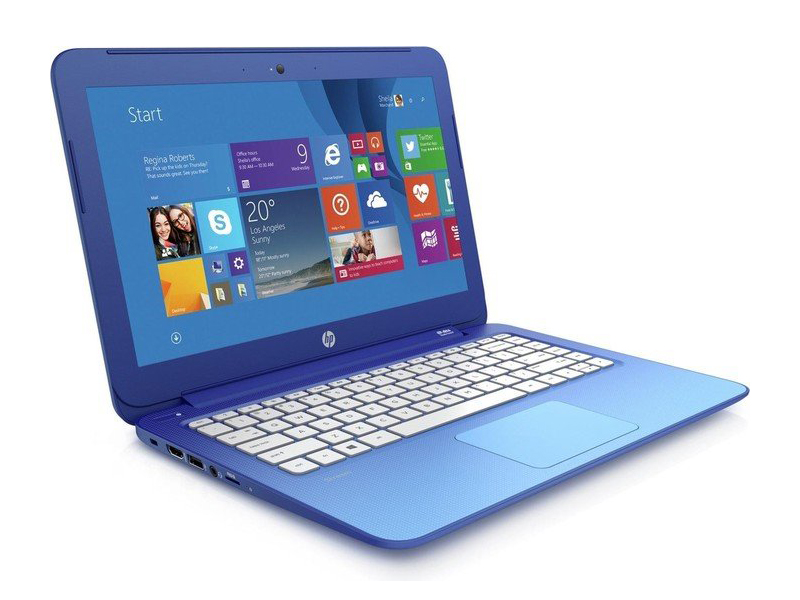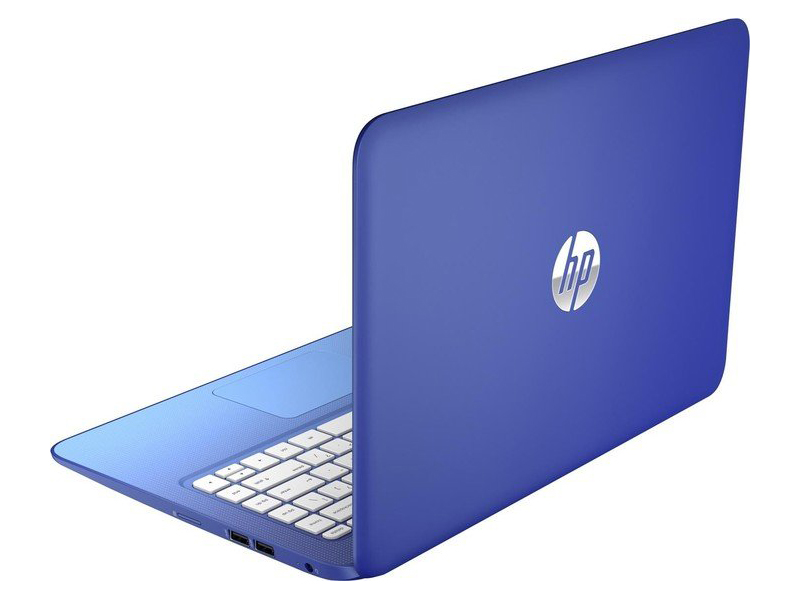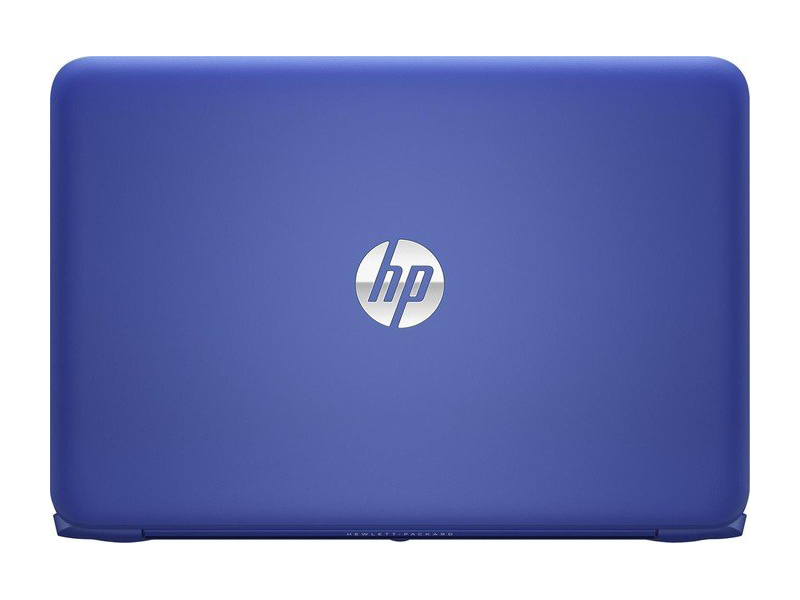HP Stream 13-c110nr
Ausstattung / Datenblatt
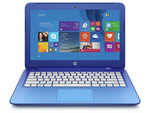
Preisvergleich
Durchschnitt von 1 Bewertungen (aus 1 Tests)
Testberichte für das HP Stream 13-c110nr
Quelle: Laptop Mag
 EN→DE Archive.org version
EN→DE Archive.org versionFor only $230, the Stream 13 offers the flexibility of a full Windows 10 experience and the performance to handle basic computing needs. Giving this laptop an attractive design and solid build quality, HP put together a strong package for the money, but we wish the system lasted longer on a charge and offered a brighter display.
Einzeltest, online verfügbar, Lang, Datum: 11.03.2016
Bewertung: Gesamt: 70%
Kommentar
Serie:
At first blush, HP’s Stream 14 is an inexpensive compact budget laptop with a long battery life and performance good enough for basic productivity and streaming media. The system is encased in an attractive and bright aqua blue colour clamshell made of plastic, and the lid has ridges that give the device texture and added grip. The slim and lightweight laptop measures 17.8 x 337.1 x 226.1 mm and weighs up to 1.4 kg, making it extremely easy to carry around. As the name implies, the Stream 14 has a 14-inch LED-backlit screen with aspect ratio of 16:9, HD resolution of 1366 x 768 pixels, and a pixel density of 112 PPI. The lack of IPS technology for the display gives it poor viewing angles, but its picture quality is decent and therefore should be suitable for entertainment like watching YouTube clips. The display is also bright enough to work in a dimly lit room. Set below the display is a full size Chiclet style keyboard with white keys, giving it a nice contrast to the Stream 14’s blue chassis hue. The keys have good travel and distance between them, and are comfortable to type on. However, the keyboard is not backlit, and that is among the few trade-offs HP had to make to keep the notebook affordable. The one-piece touchpad is also responsive and does its job well. For connectivity options, this budget notebook has a plethora of ports including USB 2.0, 3.0 and 3.1 ports. Battery-wise, the Stream 14 runs on a 3-cell 41 Wh lithium-ion battery that can provide 9 to 11 hours of battery life depending on the type of usage. This is pretty impressive for a budget notebook.
The Stream 14 runs on a dual core Intel Celeron N3060, with a base frequency of 1.6 GHZ and can be pumped up to a maximum of 2.48 GHz with the help of Intel’s Turbo Boost Technology. The Celeron N3060 is one of the weaker CPU’s in today’s market. Though it has two cores, the Stream 14 may not be able to perform well in photo and video editing or 3D designing. This should come as no surprise, since this processor is complemented with an Intel HD Graphics 400 (Braswell) graphics card. These specs clearly indicate that the Stream 14 is not appropriate for modern gaming. Instead, the Stream 14 is designed to be only suitable for basic home and office computing tasks. Packed with 4 GB of RAM, there will be no problems with system lag when running multiple programs simultaneously. The Stream 14 ships with the Microsoft Windows 10 Home 64 bit operating system, and has an inbuilt storage of 32 GB. The storage capacity can be expanded with an USB drive or a microSD card. HP has also includes a one-year subscription to 1 TB of online cloud storage on Microsoft OneDrive and use of Office 365 Personal with the system.
Hands-on article by Jagadisa Rajarathnam
Intel HD Graphics (Braswell): Grafikeinheit in den SoCs der Intel-Braswell-Serie. Basiert auf der Broadwell-GPU (Intel Gen8), unterstützt DirectX 11.2 und bietet je nach Modell 12 oder 16 EUs. Anfangs nur Intel HD Graphics benannt, später als Intel HD Graphics 400 bezeichnet.
Einige nicht anspruchsvolle aktuelle Spiele können mit geringen Details noch flüssig gespielt werden. Für Office und Video natürlich ausreichende Leistungsreserven.
» Weitere Informationen gibt es in unserem Notebook-Grafikkartenvergleich und der Benchmarkliste.
N3050: Sparsamer Dual-Core-SoC auf Basis der Atom-Architektur "Airmont" für preiswerte Notebooks. Taktet mit 1,6 bis 2,16 GHz und integriert eine DirectX-11.2-fähige Grafikeinheit. » Weitere Infos gibt es in unserem Prozessorvergleich Vergleich mobiler Prozessoren und der Prozessoren Benchmarkliste .


